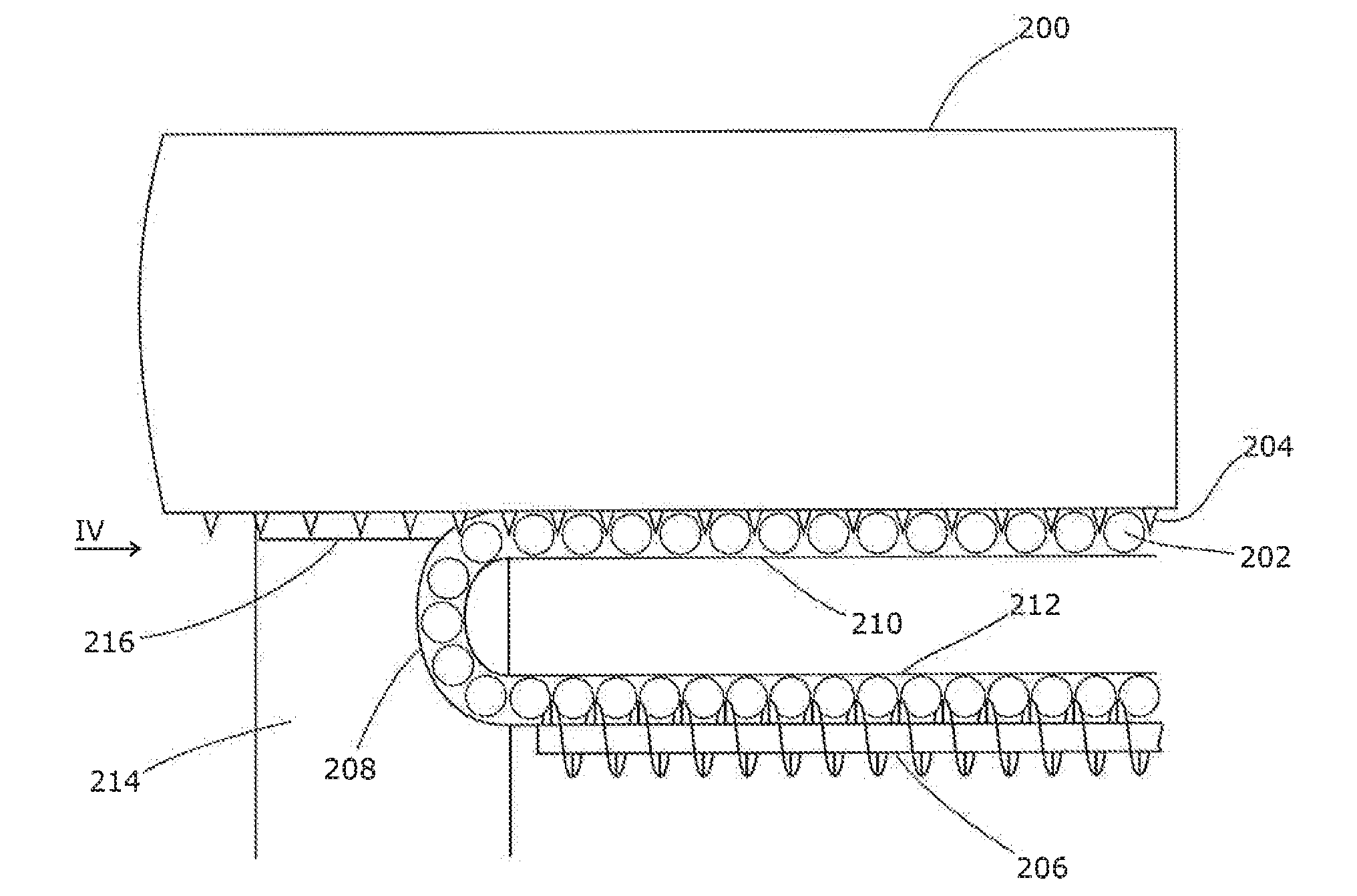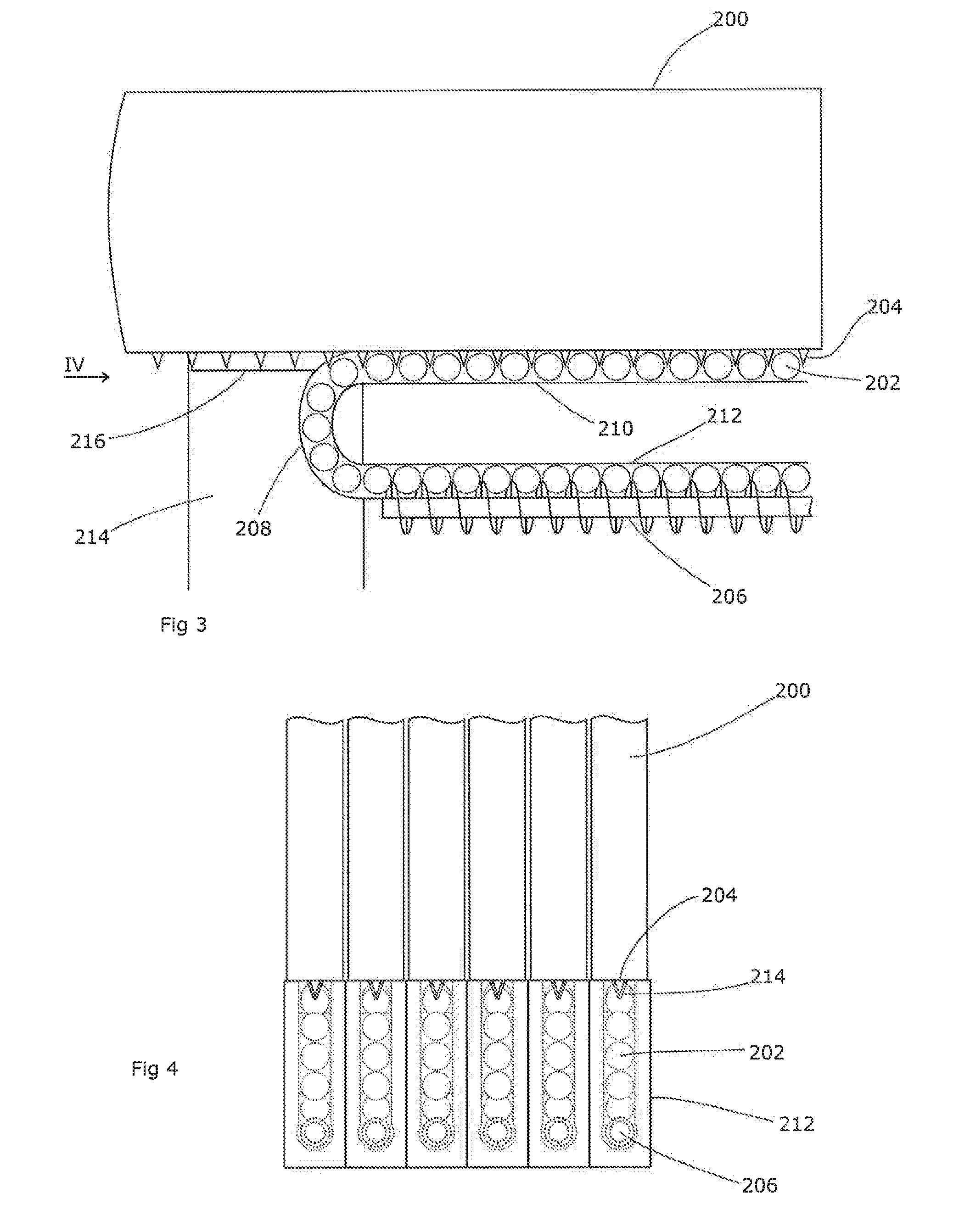Multi-leaf collimators
a collimator and multi-leaf technology, applied in the direction of bearings, linear bearings, mechanical instruments, etc., can solve the problems of damage to the healthy tissue around the tumour, damage to the tissue making up the tumour, and potential damage, so as to drive the leaves more quickly, deliver more quickly, rotate more quickly
- Summary
- Abstract
- Description
- Claims
- Application Information
AI Technical Summary
Benefits of technology
Problems solved by technology
Method used
Image
Examples
Embodiment Construction
[0018]FIG. 1 shows a side view of a single leaf 10 supported by a single ball 12 race set up as an undriven rolling-element bearing. Of course, a practical multi-leaf collimator will include many leaves (as its name suggests), arranged side-by-side and moveable independently back and forth (i.e. from left to right and vice-versa in FIG. 1). These can then act in concert to shape the beam in the manner described above. For clarity, the other leaves are omitted from FIG. 1.
[0019]The ball race is defined in a support structure 14 that includes an exposed open channel 16 allowing the leaf to rest on the ball race 12, and a return channel 18. End caps 20, 22 include U-shaped channels 24, 26 to connect the open channel 16 and the return channel 18 and thus define a complete recirculating path for the ball race 12. The leaf 12 includes a support section 28 that extends below the lower edge 30 of the remainder of the leaf 10, into the open channel 16 to rest on the exposed part of the ball ...
PUM
 Login to View More
Login to View More Abstract
Description
Claims
Application Information
 Login to View More
Login to View More - R&D
- Intellectual Property
- Life Sciences
- Materials
- Tech Scout
- Unparalleled Data Quality
- Higher Quality Content
- 60% Fewer Hallucinations
Browse by: Latest US Patents, China's latest patents, Technical Efficacy Thesaurus, Application Domain, Technology Topic, Popular Technical Reports.
© 2025 PatSnap. All rights reserved.Legal|Privacy policy|Modern Slavery Act Transparency Statement|Sitemap|About US| Contact US: help@patsnap.com



